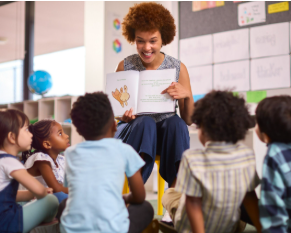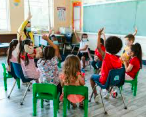Books are more than just stories—they are windows to the world. For young children, books can be powerful tools to introduce big ideas in ways that are gentle, engaging, and meaningful. Whether it’s learning about kindness, understanding differences, or discovering how the world works, books help spark conversations that shape a child’s values and thinking.
Choosing the Right Books
Start with picture books that reflect the themes you want to explore. Look for stories with relatable characters, simple language, and clear illustrations. Books about friendship, fairness, emotions, and community are great starting points. Stories that show characters solving problems or helping others also make abstract ideas easier for children to understand.
Making Connections Through Discussion
After reading a story, take time to talk about what happened. Ask open-ended questions like, “How do you think the character felt?” or “What would you do in that situation?” These moments encourage children to think deeply and connect the story to their own experiences.
Encouraging Creative Expression
Invite children to draw a picture, act out a scene, or retell the story in their own words. These playful activities help reinforce the big ideas and allow children to express what they’ve learned in creative ways.
Building a Theme Around the Book
Extend the learning by planning related activities. For example, if a book talks about helping others, you can start a kindness jar where children add notes about kind actions they see. If the story is about nature, take a walk outside to explore plants or animals mentioned in the book.
Repeating and Revisiting
Young children benefit from repetition. Reading the same story several times helps them notice new details and strengthens their understanding. Revisiting books throughout the year, especially when new situations arise, gives children a familiar framework to handle new experiences.
Creating an Inclusive Book Collection
Offer a variety of books that reflect different cultures, abilities, and family structures. When children see themselves and others in the stories they read, it builds empathy and a sense of belonging. These stories gently open conversations about acceptance, respect, and understanding differences.
Conclusion
Books are gentle guides that help children explore big ideas in safe and thoughtful ways. By choosing the right stories and creating rich learning experiences around them, educators and caregivers can nurture children’s curiosity, understanding, and sense of responsibility in a joyful, age-appropriate way.


